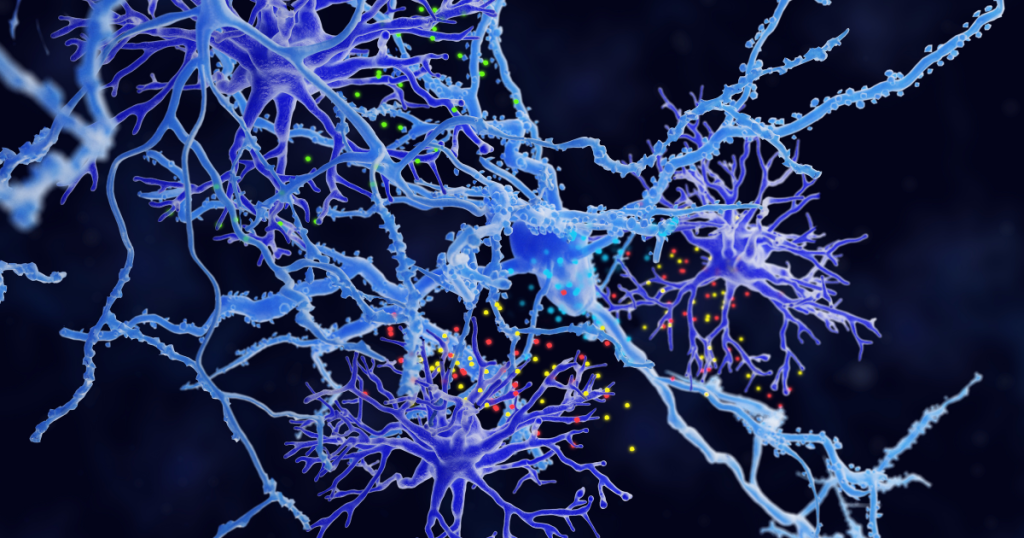Understanding eating disorders myth vs. fact requires more than blending the definition of “eating” and “disorders.” If only it were that simple. Deep in assumptions, perceptions, and damaging myths, clarity about eating disorders starts with excavation.
Although they involve problematic eating, eating disorders aren’t really about eating. Nor are they about food.
Eating disorders are about so much more. And that makes debunking widespread eating disorder myths difficult.
For all the myths and theories surrounding eating disorders, the facts are harder to come by. Even medical professionals can be guilty of not taking an eating disorder diagnosis seriously.
The unfortunate result? Misunderstandings about the severity and life-threatening potential of eating disorders.
An Overview: Understanding Eating Disorders
First and foremost, eating disorders are not a choice. (See Myth #1 below.) They are serious illnesses that can have significant physical, emotional, and social effects on people’s lives.
The annual death rate from eating disorders tops 10,200. That’s one death every 52 minutes.
Yes, from an eating disorder.
While their exact cause is unknown, it’s most likely a combination of genetic, physical, social, and psychological factors. (See Myths #3 and #4 below.)
Not all eating disorders are the same. But they do share some overlap.

And finally, anyone — regardless of age, gender, income, culture, weight, or any other factor — can develop an eating disorder. (See Myths #9 and #12 below.)
Understanding Eating Disorders: Common Myths
The less stigma there is about eating disorders, the more likely it is that people will seek help. And seeking help is associated with a far better long-term prognosis.
Eating disorders go undiagnosed in part because of medical providers’ (and others’) beliefs in stereotypes. Combating myths is the first step to helping people in need seek and receive support.
Below are 15 common eating disorder myths and the facts that dispel them.
1. Myth: Eating Disorders are a choice.
Fact: Eating disorders are not a choice.
They are serious, complex illnesses, caused by a combination of genetic, biological, psychological, and sociocultural factors and posing serious consequences for health and relationships.
More than 70 million people worldwide suffer from an eating disorder.
For people who haven’t had one, an eating disorder can seem like a choice. “Just eat. What’s the big deal?”

But this misguided thinking reduces a serious illness to factors like hunger (or presumed lack thereof) and willpower.
Eating disorders may start from a conscious decision to eat “healthier food” and increase exercise.
But that intention is not the reason for developing an eating disorder.
For people with a predisposition to eating disorders, the “healthier lifestyle” decision can spiral out of control, usually starting with some kind of diet.
Science suggests that people with eating disorders have a faulty reward system.
One problematic brain region is the orbitofrontal cortex, which signals when to stop eating. Research has found that people with anorexia and bulimia have structural and functional differences in this area.
Other research has found that people with eating disorders have more activity in the dorsal striatum, the brain area linked to habitual behavior.
Faulty reward systems and other differences in brain activity are not a choice.
2. Myth: Once you have an eating disorder, you will always have one.
Fact: Eating disorders are treatable.
While affected people can fully recover, not all do.
Just as no two people have the exact same eating disorder symptoms, eating disorder recovery looks different person to person.
The earlier someone with an eating disorder gets into treatment, the better the prognosis.
3. Myth: Parents are the main cause of eating disorders.

Fact: Parents rarely if ever have that much power to single-handedly cause their child to have an eating disorder.
While parents often feel responsible, believing their child’s eating disorder is their fault, a host of biopsychosocial factors actually causes eating disorders.
Speaking of parents, research suggests that genetics account for 40-80% of the risk of developing an eating disorder.
A female with a mom or sister who has anorexia nervosa is 12 times more likely to develop the disorder.
She is also 4 times more likely to develop bulimia nervosa compared with the general population.
So yes, eating disorders run in families. But that does not put the fault with parents or with genetics.
Eating disorders are serious, biologically based mental illnesses. And, as with many medical conditions, they may be passed down from generation to generation.
Some eating disorder symptoms, such as body dissatisfaction, binge eating, and restriction, tend to run in families due to modeling of the behavior. (These symptoms are also part of Diet Culture.)
4. Myth: Social media causes eating disorders.

Fact: If social media were the cause of an eating disorder, just about everyone would have one.
According to The Nielsen Company, the average American spends more than 11 hours a day using media. That’s more than the average time spent sleeping or working each day.
Using social media excessively is associated with eating disorder thoughts and behaviors. The risk is higher for adolescents and young adults who spend a lot of time on social media and have accounts on multiple platforms.
According to Common Sense Media Inc., teens ages 13-18 spend an average of 9 hours a day using entertainment media. And tweens ages 8-12 average 6 hours a day. (These amounts vary by race, income, and gender and do not include media use in school or while doing homework.)
Social media contributes to and reinforces sociocultural messages that the thin ideal is attainable to anyone and will provide guaranteed happiness.
5. Myth: Unless someone with an eating disorder is emaciated, there is no need for worry.

Fact: Eating disorders come in all sizes.
Ironically, the least common eating disorder, anorexia nervosa, is the one that’s most glamorized. A young, white, fragile, “waif” stereotype is typically the poster child for anorexia and at times for all eating disorders.
We need to commit to understanding eating disorders, especially in terms of social and cultural identity…
…because, in reality, people of all colors, sizes, and genders develop them.
6. Myth: Eating disorders are just an attempt to get attention.

Fact: Eating disorders are driven by more than a simple desire for attention. (See Myth #1.)
7. Myth: Weight is an excellent indicator of health.

Fact: Weight by itself is not a good indicator of health.
The “eat better, exercise, and lose weight” motto is oversimplified, misleading, and harmful.
How about new approaches that cultivate equality and don’t harp on body size? It’s likely that weight stigma, rather than weight itself, is what’s detrimental to health.
8. Myth: Only wealthy white teenage girls get eating disorders.
Fact: Eating disorders can begin at any age.

Eating disorders typically start in adolescence or early adulthood.

Anorexia and bulimia tend not to begin before puberty. About 90% of cases are diagnosed before age 20. Fewer than 10% of cases occur before age ten.
9. Myth: I don’t need to worry about my son. Boys don’t get eating disorders.

Fact: Eating disorders occur in all genders.
However, cis females are as much as 10 times more likely to develop anorexia or bulimia and 2.5 times more likely to experience binge eating disorder as cis males.
Men are likely underdiagnosed with eating disorders because assessment focuses on a desire to lose weight as opposed to building muscle.
Eating disorders are still considered more of a female disorder.
Males represent 25% of individuals with eating disorders. Among transgender men in the U.S, lifetime prevalence of eating disorders is 10.5% (and 8.1% for transgender women).
10. Myth: Recovery is really about learning to eat normally and being a healthy weight.

Fact: Eating disorder recovery is personal, and everyone’s recovery looks different.
One of the most important components of recovery is healing the relationship with food, eating patterns, body image, and movement.
For many people, recovery is often a time for self-discovery and finding new sources of joy and meaning.
Here is a first-person account of recovery.
11. Myth: Eating disorders are just a fad.

Fact: Eating disorders begin in the brain. Fads don’t.
Even medical definitions of eating disorders emphasize external factors, such as cultural pressures, parents’ attitudes toward weight and diet, and traumatic events that trigger disordered eating.
While the environment does play a part in shaping behaviors, evidence suggests that eating disorders begin in the brain.
And fads don’t begin in the brain.
“Lots of people diet or want to lose weight. Relatively few of them end up with anorexia nervosa or bulimia nervosa.” So says Walter Kaye, MD, director of the Eating Disorders Treatment and Research Program at the University of California, San Diego (UCSD) School of Medicine.
12. Myth: Only people in thin bodies have anorexia.
Fact: Fewer than 6% of people with eating disorders are underweight.
Dr. Thomas Insel, former Director of the National Institute of Mental Health, has referred to anorexia as a “brain disease with severe metabolic effects on the entire body.”
It can affect anyone, regardless of age, gender, wealth, job status, sexual orientation, ability, neurodiversity, race, ethnicity, or body shape and size.
13. Myth: Only people in large bodies have binge eating disorder (BED).

Fact: People with BED are approximately 3–6 times more likely to be “O”* than those without an eating disorder.
BED affects an estimated 1–3% of the general population and is the most common eating disorder. Typical age of onset is between age 15.5 – 27.2 years old.
BED is also associated with an earlier onset of being in a larger body and history of “O,”* with about 30% of those with BED reporting childhood “O.” (*Please see below for an explanation of the use of “O”.)
Among people seeking bariatric surgery, 4-47% meet clinical diagnosis for BED, depending upon the way they’re assessed.
14. Myth: How much people eat determines their weight.
Fact: Many factors affect how much a person weighs: genes, hormones, diet, and lifestyle (including sleep, physical activity, and stress).
Some people lose or gain weight more quickly and more easily than others. This happens regardless of the amount of food they eat.
15. Myth: Once someone with an eating disorder is an appropriate weight, they’re cured.

Fact: Recovery involves so much more and is so much deeper than normalized eating and weight restoration.
It’s about discovering everything that is within you.
The Importance of Understanding Eating Disorders Facts
Believing myths about eating disorders is easy to do, without even knowing it. Sadly, not knowing the facts is a main reason eating disorders tend to be dismissed, under-reported, and ultimately under-treated.
Eating disorder myths and facts can be nuanced. Knowing the difference between what’s true and what’s not true is key to prevention and successful treatment.
Regardless of how and why someone develops an eating disorder, recovery most often requires professional help.

Recovery, by the way, is 100% possible.
And that’s no myth. That’s a fact.
(*”O” is used in place of the word “obesity” for many reasons.
People classified as ‘obese’ by the inaccurate and racist BMI equation are subjected to warnings about their health and pressured to change their bodies.
The word ‘obesity’ perpetuates myths that body size is a behavior and that health is determined by body size. Neither of these is true. Genetics’ plays a role in both body size and health. So do factors such as the social determinants of health.)
Dr. Elayne Daniels is an international coach, consultant, and psychologist specializing in eating disorders, body image, and High Sensitivity. She is anti-diet and Intuitive Eating-certified and passionately believes comfort in your body at any size is your birthright. Contact her here for more information.


